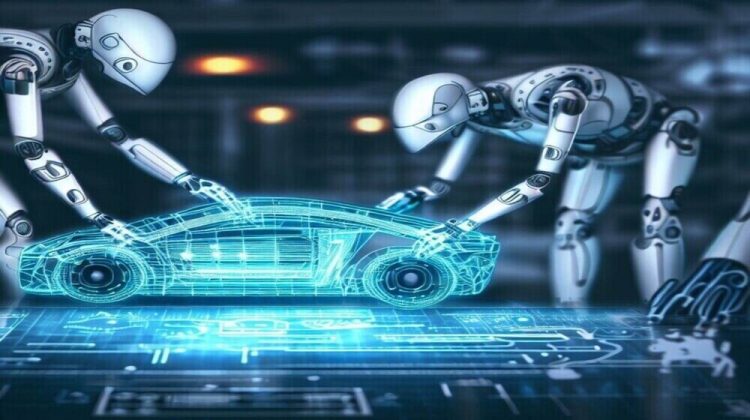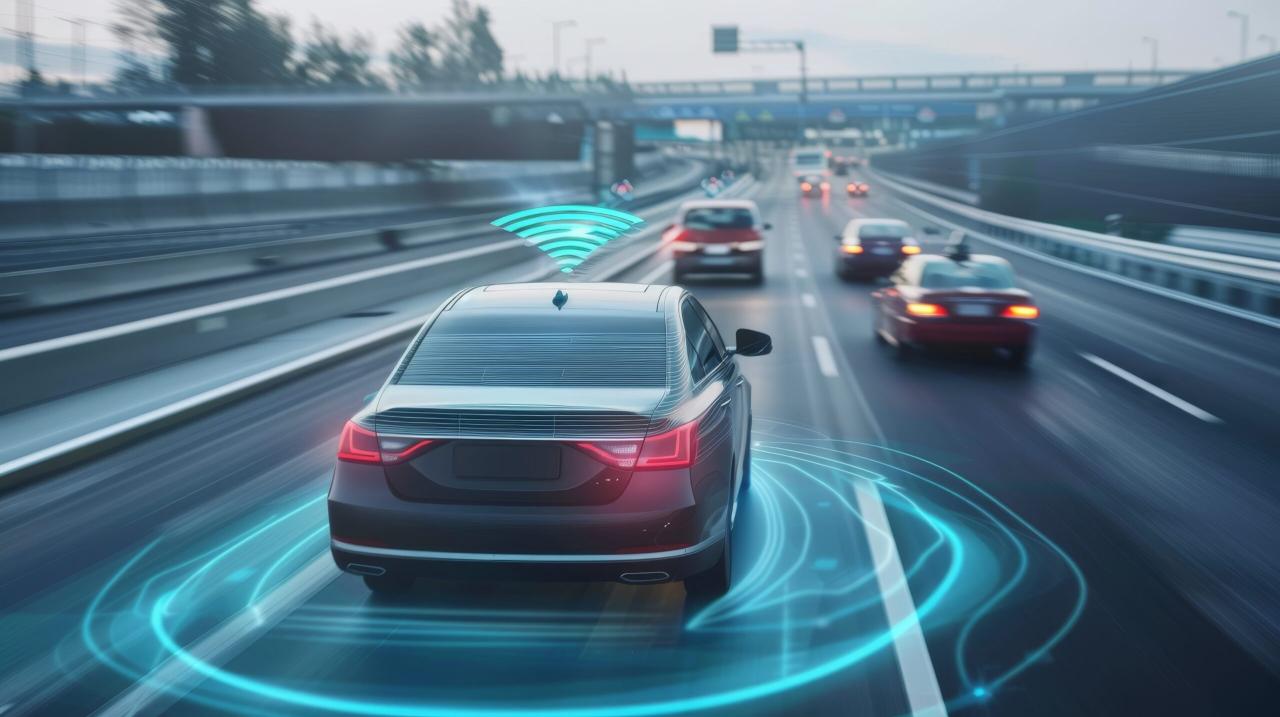Automotive Innovation Revolutionizes Transportation


The automotive industry stands at the precipice of its most significant transformation since Henry Ford introduced the assembly line. What began as mechanical innovation has evolved into a technological revolution that is fundamentally reimagining every aspect of transportation. From electrification and autonomous driving to connected services and new ownership models, innovation is not merely enhancing vehicles but completely redefining what they are and how they function within our broader transportation ecosystem. This comprehensive analysis explores how technological breakthroughs, changing consumer expectations, and environmental imperatives are converging to create the most dramatic evolution in automotive history, with far-reaching implications for manufacturers, consumers, and society as a whole.
A. The Electric Revolution: Powering the Future
The transition from internal combustion engines to electric powertrains represents the most visible and impactful innovation in the automotive sector, driven by advancements in battery technology, charging infrastructure, and consumer adoption.
A. Battery Technology Breakthroughs: The heart of the electric vehicle revolution lies in continuous improvements in energy storage technology.
-
Solid-State Battery Development: Companies like QuantumScape and Toyota are pioneering solid-state batteries that promise to double energy density while reducing charging times to minutes rather than hours. These batteries eliminate flammable liquid electrolytes, addressing safety concerns while potentially reducing costs by 30-40% per kilowatt-hour.
-
Silicon-Anode Innovations: Battery manufacturers are increasingly incorporating silicon into anodes to replace graphite, boosting energy density by 20-40%. Companies like Sila Nanotechnologies and Group14 are commercializing these technologies, which could extend EV range to 500+ miles on a single charge while maintaining battery longevity.
-
Cobalt-Free Chemistry Development: The industry is rapidly moving toward lithium-iron-phosphate (LFP) and other cobalt-free chemistries that reduce dependency on controversial minerals while lowering costs. Tesla’s adoption of LFP batteries in standard-range vehicles demonstrates the commercial viability of these safer, more sustainable alternatives.
B. Charging Infrastructure Evolution: The practicality of electric vehicles depends on charging solutions that rival the convenience of gasoline refueling.
-
Ultra-Fast Charging Networks: Companies like Ionity and Electrify America are deploying 350kW charging stations that can add 200 miles of range in under 15 minutes. These networks are increasingly integrated with navigation systems that precondition batteries en route to maximize charging speed.
-
Wireless Charging Development: Both stationary and dynamic wireless charging systems are advancing toward commercialization. Companies like WiTricity are developing home pad systems, while projects like ElectReon are testing road-embedded technology that could charge vehicles while driving, potentially eliminating range anxiety entirely.
-
Bidirectional Charging Capabilities: Modern EVs increasingly feature vehicle-to-grid (V2G) technology that enables them to serve as distributed energy resources. Ford’s F-150 Lightning can power homes during outages, while Nissan Leaf owners in some markets can sell electricity back to the grid during peak demand, creating new value streams.
C. Manufacturing and Platform Innovation: Electric vehicles enable fundamentally different manufacturing approaches and business models.
-
Dedicated EV Platforms: Unlike converted combustion vehicles, purpose-built platforms like Volkswagen’s MEB and GM’s Ultium optimize packaging, performance, and manufacturing efficiency. These “skateboard” architectures bundle batteries and motors into the chassis floor, enabling greater interior space and design flexibility.
-
Gigafactory Scale Production: Tesla’s Fremont factory and Volkswagen’s Zwickau plant demonstrate how dedicated EV manufacturing achieves unprecedented scale and vertical integration. These facilities leverage extensive automation and continuous process improvement to drive down costs while increasing output quality.
-
Modular Vehicle Architectures: Companies like REE Automotive and Canoo are developing fully modular platforms that separate the drivetrain “skateboard” from upper vehicle bodies, enabling rapid development of multiple vehicle types on shared foundations with reduced development costs and time.
B. Autonomous Driving: The Road to Self-Driving Vehicles
The pursuit of autonomous vehicles represents perhaps the most complex engineering challenge in automotive history, requiring convergence of multiple advanced technologies.
A. Sensor Fusion and Perception Systems: Autonomous vehicles rely on sophisticated sensor suites and interpretation algorithms.
-
LiDAR Technology Advancement: Modern LiDAR systems from companies like Luminar and Velodyne provide high-resolution 3D mapping with ranges exceeding 250 meters, costing 90% less than units available just five years ago. These sensors create detailed point clouds of the vehicle’s surroundings regardless of lighting conditions.
-
Computer Vision Evolution: Deep learning algorithms process camera data to identify objects, read signs, and interpret complex scenes. Tesla’s vision-only approach demonstrates how sophisticated neural networks can achieve remarkable accuracy using primarily camera inputs supplemented by radar and ultrasonic sensors.
-
Radar and Thermal Imaging: Advanced radar systems provide all-weather detection capabilities, while thermal cameras like those from Teledyne FLIR enable pedestrian and animal detection in complete darkness. Sensor fusion algorithms combine these inputs to create redundant, robust environmental awareness.
B. Artificial Intelligence and Decision Making: The “brain” of autonomous vehicles represents a monumental software challenge.
-
Deep Reinforcement Learning: Companies like Waymo and Cruise use sophisticated simulation environments to train AI systems through millions of virtual miles, exposing them to rare edge cases that would be impractical to encounter in real-world testing. These systems learn complex driving behaviors that are difficult to program explicitly.
-
High-Definition Mapping: Autonomous systems combine real-time sensor data with centimeter-accurate HD maps from companies like Civil Maps and DeepMap. These maps provide contextual information about road geometry, signage, and typical traffic patterns that enhances real-time decision making.
-
Predictive Behavior Modeling: Advanced AI systems anticipate the actions of other road users by analyzing subtle behavioral cues. NVIDIA’s Drive Concierge can predict when a pedestrian might step into the road or when a nearby vehicle might change lanes unexpectedly, enabling smoother, more defensive driving.
C. Safety and Validation Systems: Ensuring autonomous vehicle safety requires unprecedented testing and validation methodologies.
-
Simulation-Based Validation: Companies run billions of virtual miles using platforms like NVIDIA Drive Sim and Cognata to test system performance under countless scenarios. This digital proving ground accelerates development while ensuring comprehensive testing of rare but critical situations.
-
Redundant System Architecture: Safety-critical systems like braking and steering incorporate multiple redundant components to ensure continued operation even if primary systems fail. This approach, combined with comprehensive fault detection, creates systems substantially more reliable than human drivers in many conditions.
-
Ethical Decision Frameworks: As vehicles approach full autonomy, manufacturers and regulators are developing frameworks for how vehicles should behave in unavoidable accident scenarios. These complex ethical considerations are being addressed through multidisciplinary approaches combining engineering, ethics, and law.

C. Connected Vehicle Ecosystems: Cars as Digital Platforms
Modern vehicles are evolving into connected computing platforms that communicate with each other, infrastructure, and the cloud.
A. Vehicle-to-Everything (V2X) Communication: Connectivity enables vehicles to perceive beyond their immediate sensor range.
-
Dedicated Short-Range Communications (DSRC): Using the 5.9 GHz spectrum, vehicles can exchange position, speed, and trajectory information with other equipped vehicles up to 300 meters away, providing warnings about hazardous conditions, emergency braking, or intersection conflicts before they’re visible to drivers or sensors.
-
Cellular Vehicle-to-Everything (C-V2X): Leveraging cellular networks, this technology enables communication with infrastructure, pedestrians’ smartphones, and network-based services. Qualcomm’s 9150 C-V2X chipset supports both direct communication and network-based applications for comprehensive connectivity.
-
Cloud-Connected Services: Modern vehicles continuously upload diagnostic data, traffic observations, and map updates. Tesla’s fleet learning system aggregates real-world driving data from millions of vehicles to improve Autopilot performance and identify edge cases for further training.
B. Software-Defined Vehicle Architecture: Vehicles are increasingly defined by their software capabilities rather than hardware specifications.
-
Over-the-Air (OTA) Updates: Tesla pioneered the ability to deliver major vehicle improvements remotely, and now manufacturers from Ford to BMW are implementing similar capabilities. These systems can enhance performance, add features, and fix issues without dealership visits, creating ongoing revenue streams and improving customer satisfaction.
-
Application Ecosystems: Platforms like BMW’s Operating System 8 and GM’s Ultifi are creating automotive app stores where third-party developers can create services for navigation, entertainment, and productivity. This approach transforms vehicles into extensible platforms rather than fixed-function devices.
-
Cybersecurity Integration: As vehicles become more connected, comprehensive cybersecurity becomes critical. Companies like Argus and Karamba Security provide embedded protection that monitors vehicle networks for anomalous behavior and can isolate compromised systems while maintaining safe operation.
C. User Experience and Interface Innovation: Digitalization is transforming how users interact with their vehicles.
-
Voice Assistant Integration: Advanced natural language processing enables sophisticated voice control for navigation, media, and vehicle functions. Amazon Alexa Custom Assistant and Google Embedded Assistant allow customization while maintaining familiar interaction paradigms.
-
Augmented Reality Interfaces: Head-up displays from companies like Continental and Panasonic project navigation arrows, safety warnings, and points of interest directly onto the windshield, reducing distraction while providing contextual information.
-
Biometric Authentication and Personalization: Facial recognition and fingerprint sensors enable automatic adjustment of seating position, climate preferences, and entertainment options for different drivers, while continuous monitoring can detect driver fatigue or impairment.
D. Sustainable Manufacturing and Circular Economy
Automotive innovation extends beyond the vehicle itself to encompass more sustainable manufacturing processes and business models.
A. Green Manufacturing Initiatives: Automakers are transforming production facilities to minimize environmental impact.
-
Carbon-Neutral Factories: BMW’s Leipzig plant runs entirely on renewable energy, while Mercedes-Benz’s Factory 56 achieves carbon-neutral production through extensive solar generation, biomass heating, and purchased renewable energy certificates.
-
Water Recycling and Reduction: Ford’s Dearborn truck plant recycles approximately 20 million gallons of water monthly, while Toyota’s water reduction initiatives have decreased consumption by 30% per vehicle since 2000 despite increased production volumes.
-
Zero-Waste Manufacturing: Many plants now achieve over 95% waste recycling through comprehensive material separation and innovative reuse programs. Subaru’s Lafayette plant has sent zero waste to landfill since 2004, demonstrating the feasibility of circular manufacturing.
B. Material Innovation and Lightweighting: Advanced materials are reducing weight while maintaining safety and performance.
-
Carbon Fiber Composites: Once exclusive to supercars, carbon fiber is increasingly used in mass-market vehicles. BMW’s i3 demonstrated how carbon passenger cells could reduce weight while improving safety, though cost remains a barrier to widespread adoption.
-
Advanced High-Strength Steels: Latest-generation steels provide exceptional strength-to-weight ratios at substantially lower cost than alternatives. These materials enable lighter vehicle structures without compromising crash safety, with most modern vehicles incorporating 50-60% high-strength steel.
-
Sustainable Material Integration: Automakers are increasingly using recycled and renewable materials for interiors. Ford uses REPREVE fabric (made from recycled bottles) in many vehicles, while BMW incorporates sustainably sourced woods and olive-leaf tanned leather.
C. Circular Business Models: Innovation extends to how vehicles are owned, used, and recycled.
-
Vehicle Subscription Services: Companies like Care by Volvo and Porsche Drive offer all-inclusive monthly subscriptions that bundle payment, insurance, and maintenance. These models appeal to consumers seeking flexibility while providing manufacturers with recurring revenue streams.
-
Remanufacturing and Refurbishment: Companies like Renault and Ford operate extensive remanufacturing programs that restore components like transmissions and starters to original specifications at 40-60% lower cost than new parts, with equivalent warranty coverage.
-
Battery Second-Life Applications: As EV batteries degrade below automotive requirements (typically 70-80% of original capacity), they find second lives in stationary storage applications. Companies like Connected Energy use these batteries for commercial energy storage, extending useful life by 5-10 years before recycling.

E. Mobility Services and Urban Integration
Automotive innovation increasingly focuses on how vehicles function within broader transportation ecosystems and urban environments.
A. Mobility-as-a-Service (MaaS) Platforms: Digital platforms are creating integrated multi-modal transportation systems.
-
Integrated Booking and Payment: Apps like Whim (Helsinki) and Moovit aggregate public transit, ride-sharing, scooter rentals, and taxi services into single interfaces with unified payment. These platforms reduce private car dependency while providing more flexible transportation options.
-
Micro-Mobility Integration: Vehicles are being designed specifically for shared use in urban environments. Citroën’s Ami and Toyota’s i-Road represent new vehicle categories optimized for short trips, easy parking, and sharing economies.
-
Autonomous Ride-Hailing Services: Companies like Waymo and Cruise are deploying autonomous ride-hailing services in select cities, providing early glimpses of how self-driving technology might transform urban mobility, particularly for those unable to drive.
B. Urban Infrastructure Integration: Vehicles are becoming more integrated with city infrastructure and energy systems.
-
Smart Parking Solutions: Vehicles communicating with parking infrastructure can automatically locate and reserve spaces, with payment handled seamlessly. This reduces congestion caused by drivers searching for parking, estimated to account for 30% of urban traffic.
-
Grid Integration: As previously mentioned, vehicle-to-grid technology enables EVs to support electrical infrastructure during peak demand. Fleet operators are beginning to aggregate this capacity to participate in energy markets, creating new revenue streams.
-
Traffic Flow Optimization: Connected vehicles sharing speed and position data enable more accurate traffic modeling and signal timing optimization. Cities like Las Vegas are piloting systems that use vehicle data to create “green waves” that reduce stops and improve fuel efficiency.
C. Safety and Accessibility Innovations: Technology is making transportation safer and more accessible for all users.
-
Vulnerable Road User Protection: Advanced systems can detect pedestrians, cyclists, and motorcyclists with increasing accuracy, applying automatic emergency braking when collision risk is identified. These systems are particularly valuable in urban environments with mixed traffic.
-
Accessibility Enhancements: Technologies like autonomous wheelchair-accessible vehicles from companies like Waymo and Voyage promise to dramatically improve mobility for people with disabilities. Similarly, voice control and other interface innovations make vehicles more usable for those with physical limitations.
-
Senior Mobility Solutions: As populations age, vehicles with enhanced assistance systems enable longer safe driving careers. Systems that monitor driver alertness and capability can extend safe driving years while providing transition options when self-driving is no longer appropriate.
Conclusion: The Accelerating Transformation
The automotive industry’s evolution is accelerating at an unprecedented pace, driven by converging technological breakthroughs, environmental imperatives, and changing consumer expectations. The vehicles of the near future will be electric, increasingly autonomous, deeply connected, and integrated into broader mobility ecosystems in ways that fundamentally transform their role in society. Success in this new landscape requires manufacturers to master competencies far beyond traditional mechanical engineering, including software development, data analytics, and service design. The companies that thrive will be those that view their products not as isolated devices but as elements within integrated systems that provide transportation solutions while minimizing environmental impact and maximizing safety and accessibility. The automotive revolution is well underway, and its implications extend far beyond transportation to touch nearly every aspect of modern life.
Tags: automotive innovation, electric vehicles, autonomous driving, connected cars, vehicle technology, automotive industry, future of transportation, EV technology, self-driving cars, smart mobility, automotive revolution, clean transportation



